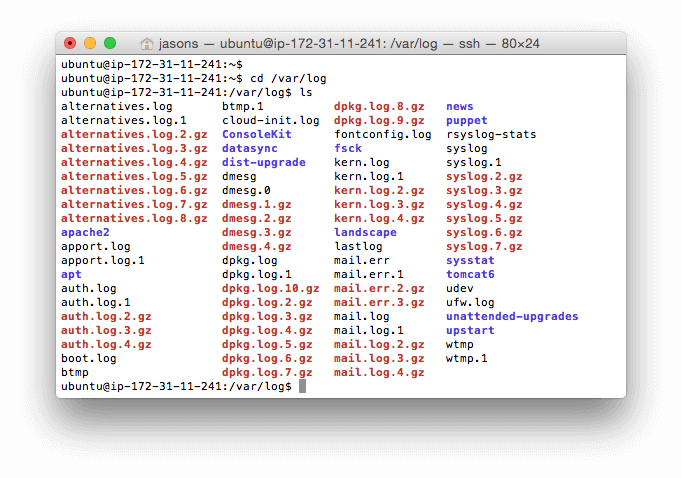

Applications can write to syslog or the journal. These sources can interact with each other: journald can forward all its messages to syslog. Last but not least, you may have your own apps using a logging library to write to a specific file.So you can find your boot/reboot logs in /var/log/messages or /var/log/syslog Distros without systemd have a syslog daemon reading from the kernel ring buffer, which normally has all the boot messages. Systemd now takes care of this: you can view boot-related logs via journalctl -b. Older Linux versions would record boot logs via bootlogd to /var/log/boot or /var/log/boot.log.


By default, it writes to files in /var/log, which is how we got the earlier message from /var/log/auth.log. A syslog daemon (e.g., rsyslog) then picks the message, parses it and writes it to various destinations. When there’s no systemd, processes like SSH can write to a UNIX socket (e.g., /dev/log) in the syslog message format. May 05 08:57:27 ubuntu-bionic sshd: pam_unix(sshd:session): session opened for user vagrant by (uid=0) The journal is written in a binary format, so you’ll use journalctl to explore it, like: Systemd catches the output of these services (i.e., logs like the one above) and writes them to the journal. Most Linux distros have systemd to manage services (like SSH above). In Linux, logs come from different sources, mainly: Notice how the log contains a few fields, like the timestamp, the hostname, the process writing the log and its PID, before the message itself. Here’s an example of SSH log from /var/log/auth.log directory: May 5 08:57:27 ubuntu-bionic sshd: pam_unix(sshd:session): session opened for user vagrant by (uid=0) If you’re new to logs, we explain more about the benefits of logging in our log management guide. They often come with other structured data, such as a hostname, being a valuable analysis and troubleshooting tool for admins when they encounter performance issues.

Linux logs are pieces of data that Linux writes, related to what the server, kernel, services, and applications running on it are doing, with an associated timestamp. Spoiler alert: the easiest way is to send all system logs to Sematext Cloud in three commands, so you can build actionable dashboards:
#Find log files in linux how to
How to centralize logs of many servers in one location.How to read and search logs, whether they’re written by journald or syslog.Important types of Linux logs and their typical location.What are Linux logs and who generates them.If you want to learn a bit about Linux system logs, please continue, as we’ll talk about all these and more: TL DR note: if you want the bzip2 -9 version of this post, scroll down to the very last section for some quick pointers. Get Started with Linux Logging: TL DR Takeaways.Most Important Linux Log Files You Should Monitor.Linux Logs Location: Where Are The Files Stored?.


 0 kommentar(er)
0 kommentar(er)
